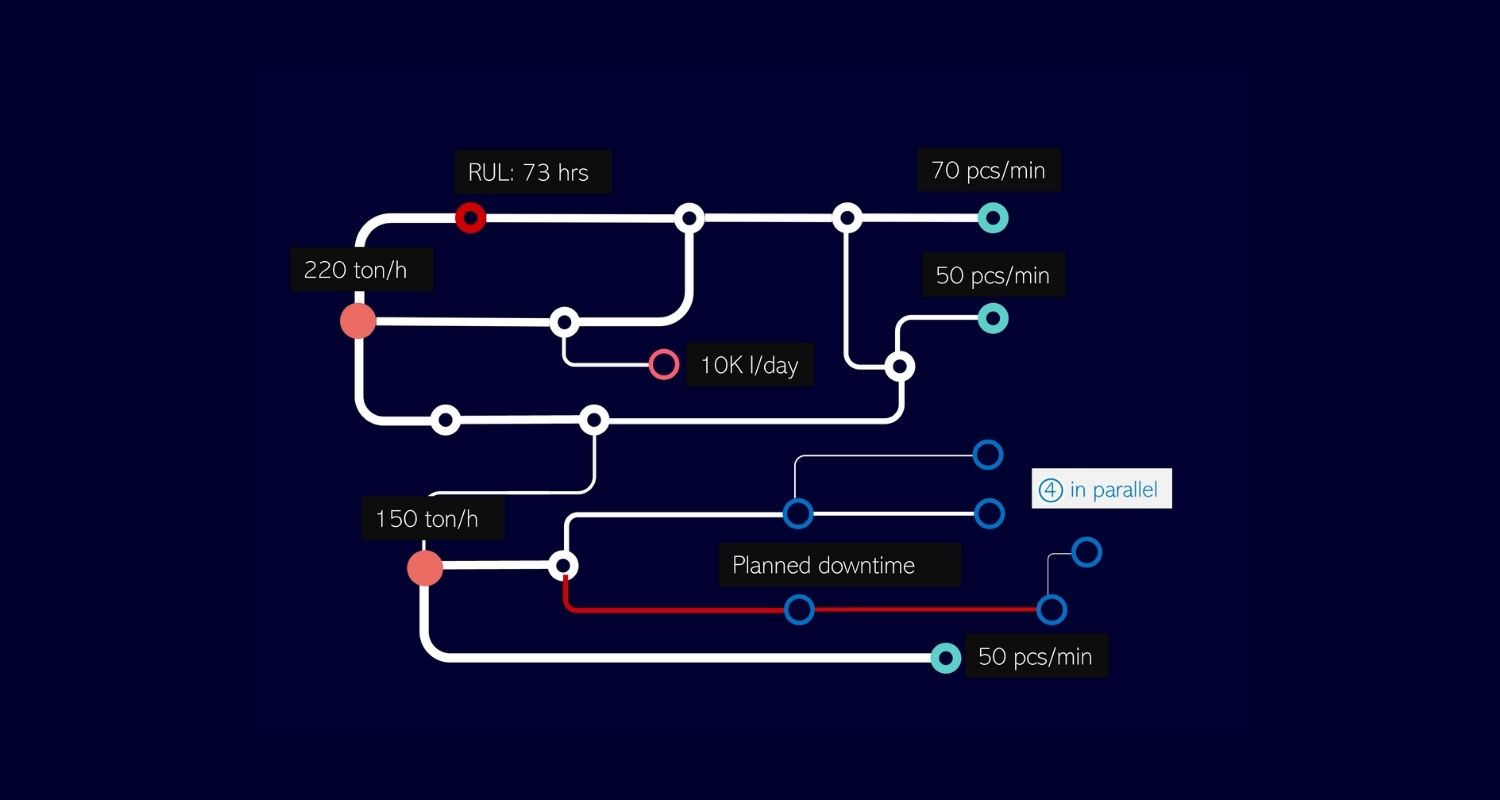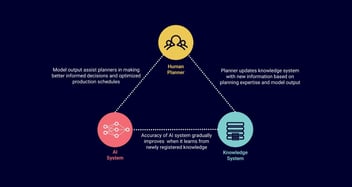Production Planning & Scheduling
Digitize Your Planning Scope
Four enablers for accelerated production planning & scheduling
Manufacturing companies that intend to lead the way in digitizing their planning and scheduling efforts and want to make a lasting impact with AI have to overcome some organizational and technical challenges. Happily, technology is rapidly evolving, and new platforms and tools are coming on the market that provide the necessary technical building blocks to address these challenges and make it possible to embed analytics in every aspect of the day-to-day or even minute-to-minute decision making processes.
In a series of blog posts we show what it takes to successfully implement a digitized production planning and scheduling process at scale. We identified four key enablers that will help planners in making better, faster, and smarter decisions. In a first article, we focus on the added value of building a digital prodution twin.

Four enablers for accelerated production planning & scheduling - step 1
Looking at the factory from a planners perspective
Building a realistic production plan is not possible without having a realistic, up-to-date view of your production facility. That is why building a digital twin of your production process should be the starting point for any digital strategy.
Building a digital twin is the starting point for any digital strategy.
Production engineers, for example, will use a digital twin as a virtual copy of the layout of all physical equipment making up a production facility. Sensors on a production line are used to analyze important performance indicators. Maintenance engineers, on the other hand, are more interested in digital twins for individual equipment, with a focus on how the electrical and mechanical components are functioning.
It is important however that a digital twin can be modeled from the perspective of a production planner as well. When planners are evaluating a manufacturing process, they will consider the different paths or routings that can be followed to convert raw materials or semi-finished goods into finished products. Products can be produced by following multiple paths, at a certain speed, and requiring certain resources. Different product variations will require different routings.
Start small, build up gradually.
As such – from a production planners’ perspective – it should be possible to design a planning entity as a set of physical assets grouped together in logical routings. All constraints and any other planning logic can be mapped on a planning entity. Your planning scope can begin on a scale as small as a single packaging machine and eventually evolve to encompass an entire factory.
Over time, it might be helpful to create a fully integrated digital twin that maps the factory from different angles. This could benefit multiple manufacturing functions, since AI initiatives can be shared across the organization. For example, asset health indicators resulting from predictive maintenance initiatives could be used to avoid scheduling premium goods on less reliable assets. More accurate demand forecasts will eventually lead to more reliable production plans. Real-time alerts coming from your production quality monitoring system may raise a notification to reshedule a production batch.
Make sustainability efforts part of your digital twin.
As sustainability is becoming an important objective for manufacturing companies, weather forecasts can be integrated so that production can be planned in function of the availability of renewable energy.
Want to know more?Download our whitepaper on how to accelerate with production planning & scheduling.


